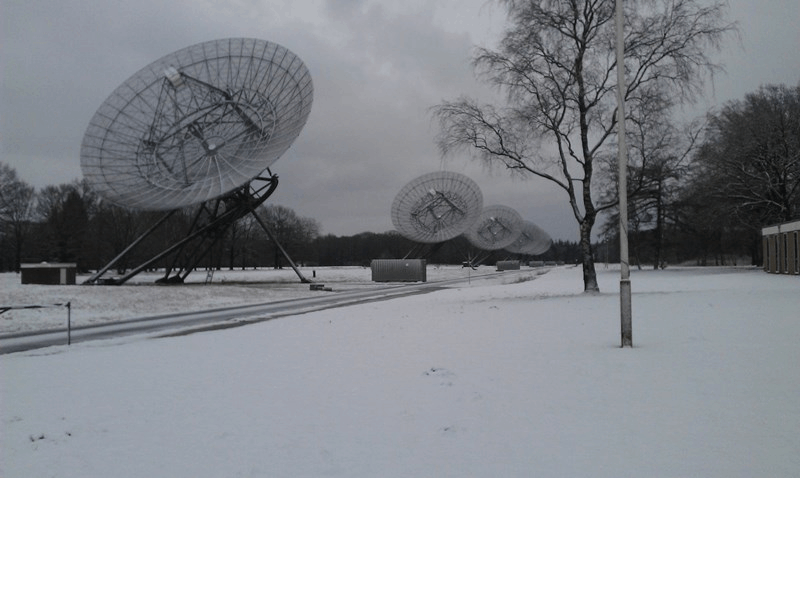Daily Image
25-03-2013The effect of Wet Snow on the WSRT
| Submitter: | Harm Munk, Geert Kuper |
| Description: | Some radio astronomers claim that they can do radio observations always, certainly at 1.4 GHz: At night, during the day, in sunshine or in rain. OK, sometimes the Sun is a spoilsport, and sometimes we can't get useful data during the day due to the ionospheric disturbances. But the weather is never a problem. Or is it? On Tuesday, February 12 2013, a weather front passed from west to east over The Netherlands. It came with a few centimeters of snow. But the air temperature was well above zero, so the snow quickly turned into sleet. It started snowing near the WSRT around 6 o'clock in the morning, local time. Around 8 o'clock local time, the next snowfall started, depositing some more wet snow in the dishes. The effects of the thin layer of melting snow is clearly visible in the plot of the total power of each of the telescopes. Around 5:00 UT their total powers, except telescope D, began to increase, levelling out at 5:30 UT. At 6:45 UT, the total power started to rise again when the next snowfall arrived. It kept on snowing until well after the observation ended. The total increase in power was roughly 6 dB. This increase strongly affected the eVLBI observations with the WSRT that day. Only after the snowfall had stopped, and the collected snow had melted around 12 UT, did the power levels return to 'normal'. (NB: Telescope D had a broken receiver. This explains the almost flat curve for this telescope.) |
| Copyright: | Harm Munk, Geert Kuper |
| Tweet |  |
